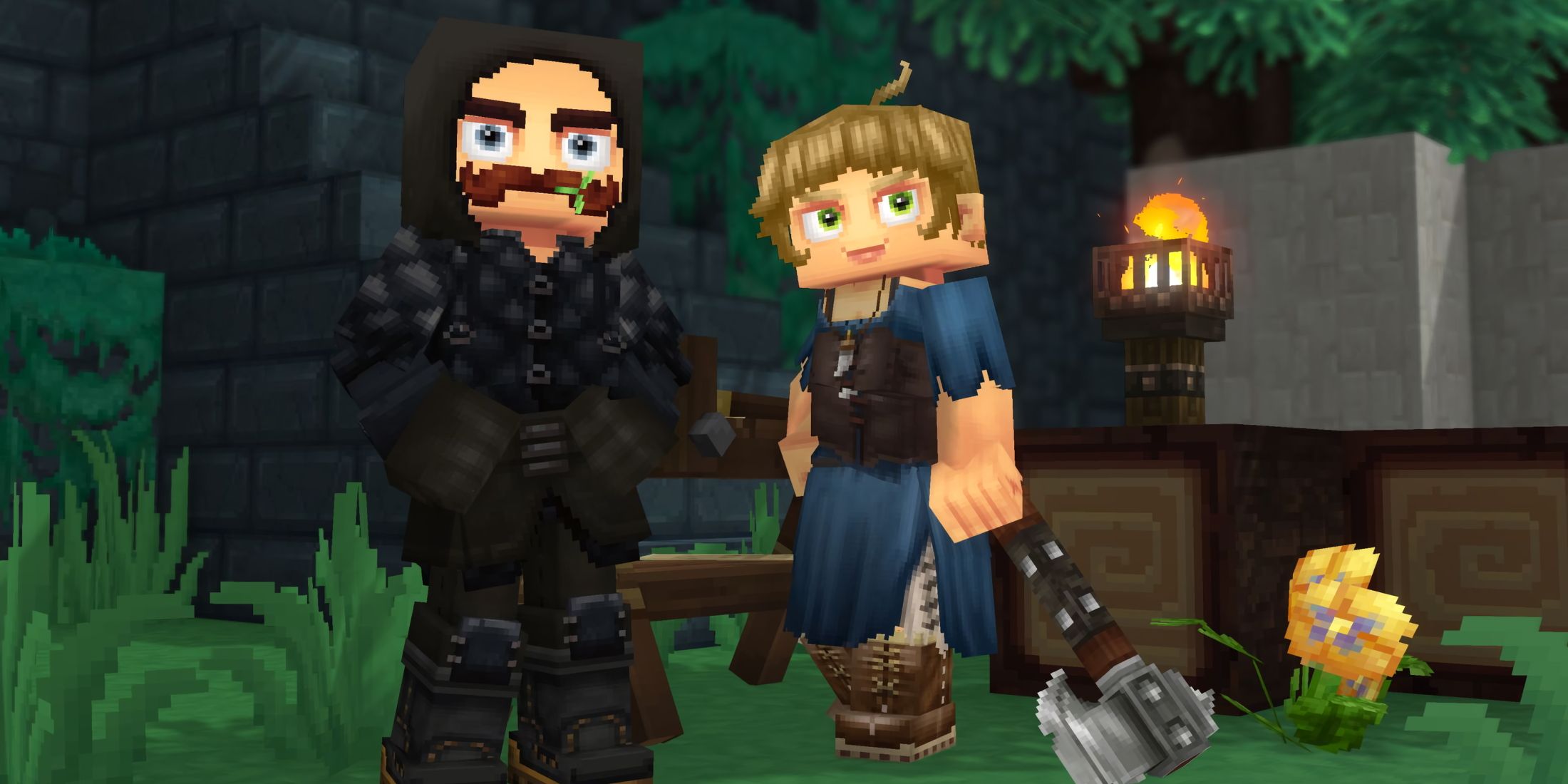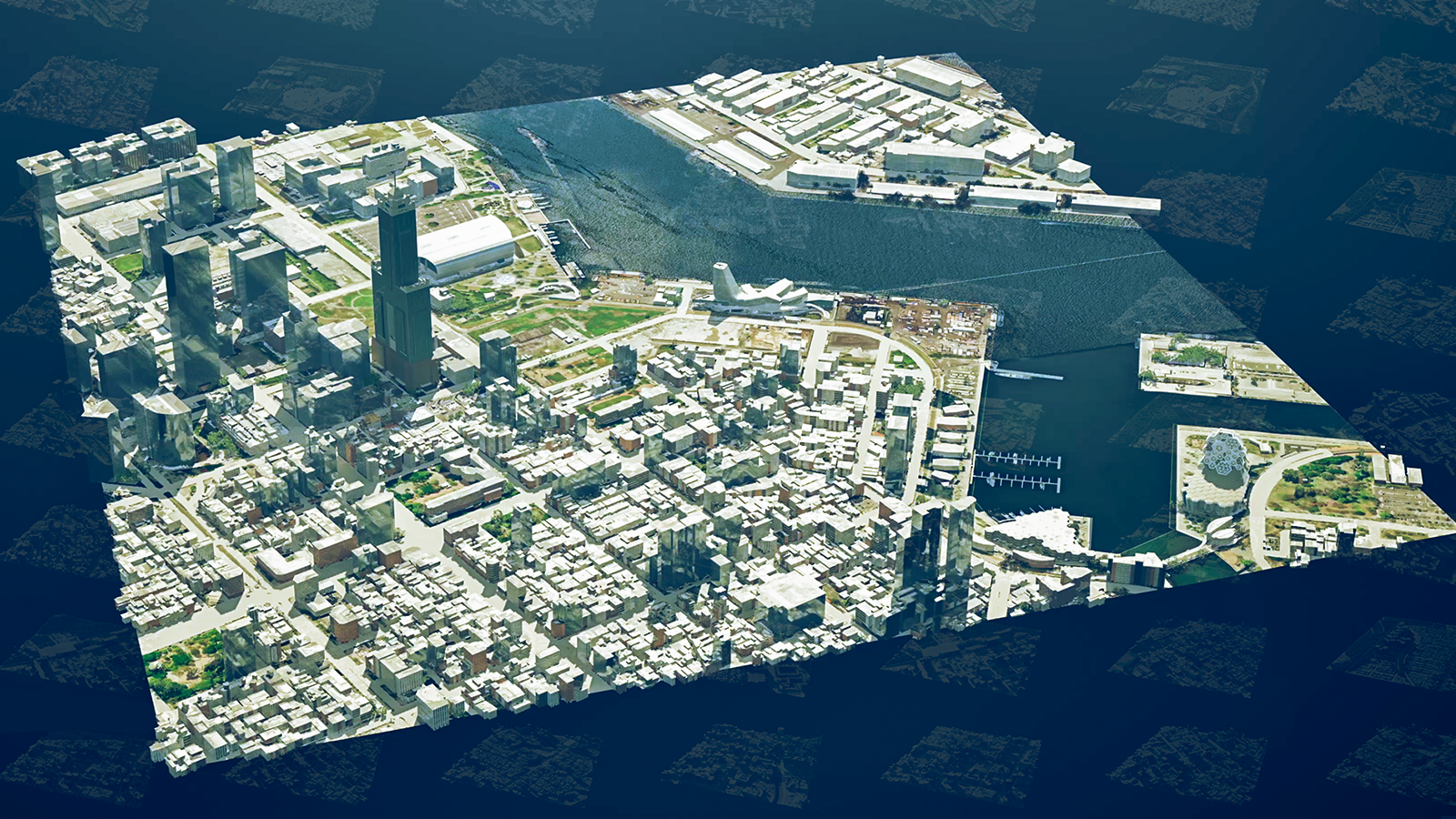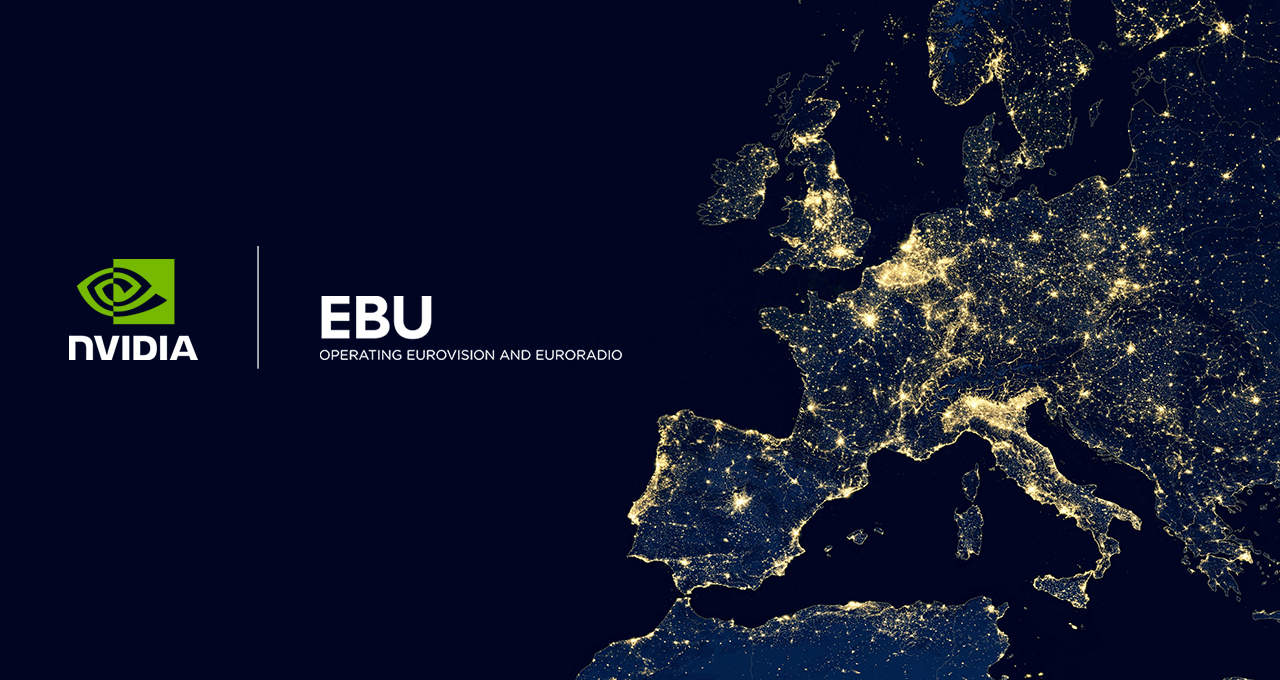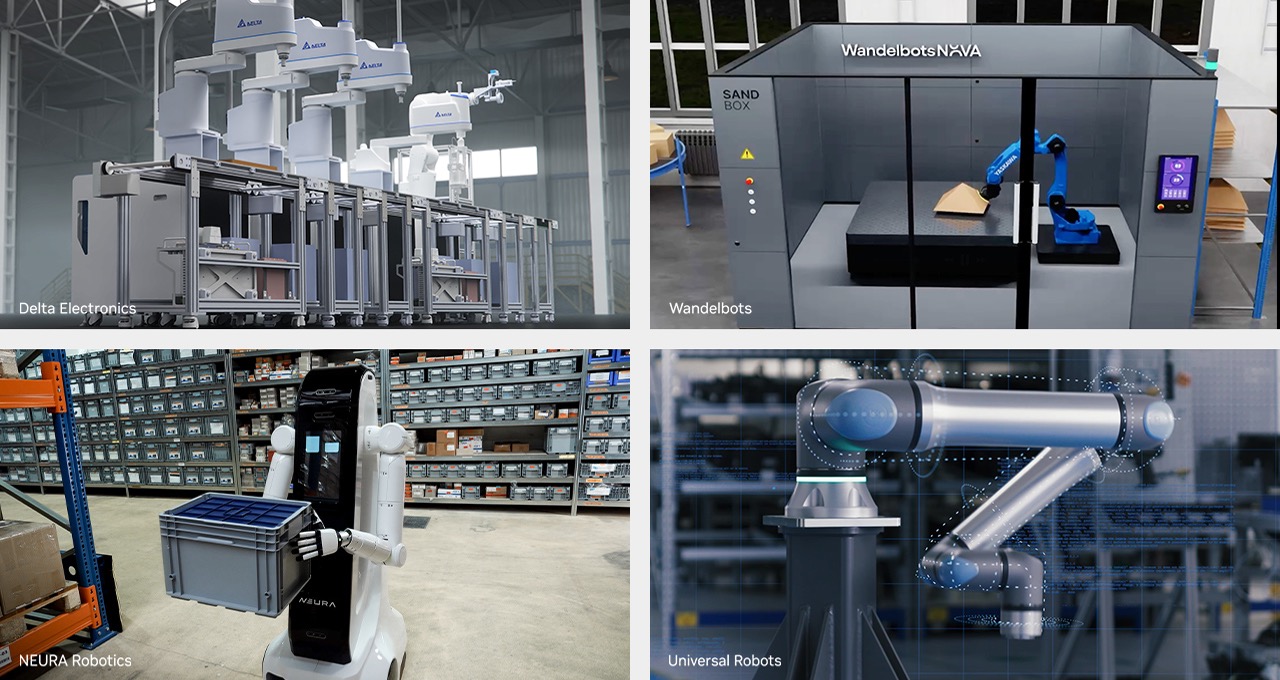BOUNCING FROM RUBBER DUCKIES AND FLYING SHEEP TO CLONES FOR THE BOYS SEASON 4
By TREVOR HOGG
Images courtesy of Prime Video.
For those seeking an alternative to the MCU, Prime Video has two offerings of the live-action and animated variety that take the superhero genre into R-rated territory where the hands of the god-like figures get dirty, bloodied and severed. “The Boys is about the intersection of celebrity and politics using superheroes,” states Stephan Fleet, VFX Supervisor on The Boys. “Sometimes I see the news and I don’t even know we can write to catch up to it! But we try. Invincible is an intense look at an alternate DC Universe that has more grit to the superhero side of it all. On one hand, I was jealous watching Season 1 of Invincible because in animation you can do things that you can’t do in real life on a budget.” Season 4 does not tone down the blood, gore and body count. Fleet notes, “The writers almost have this dialogue with us. Sometimes, they’ll write in the script, ‘And Fleet will come up with a cool visual effect for how to kill this person.’ Or, ‘Chhiu, our fight coordinator, will make an awesome fight.’ It is a frequent topic of conversation. We’re constantly trying to be inventive and create new ways to kill people!”
When Splintersplits in two, the cloning effect was inspired by cellular mitosis.
“The writers almost have this dialogue with us. Sometimes, they’ll write in the script, ‘And Fleet will come up with a cool visual effect for how to kill this person.’ Or, ‘Chhiu, our fight coordinator, will make an awesome fight.’ It is a frequent topic of conversation. We’re constantly trying to be inventive and create new ways to kill people!”
—Stephan Fleet, VFX Supervisor
A total of 1,600 visual effects shots were created for the eight episodes by ILM, Pixomondo, MPC Toronto, Spin VFX, DNEG, Untold Studios, Luma Pictures and Rocket Science VFX. Previs was a critical part of the process. “We have John Griffith, who owns a small company called CNCPT out of Texas, and he does wonderful Unreal Engine level previs,” Fleet remarks. “On set, we have a cartoon of what is going to be done, and you’ll be amazed, specifically for action and heavy visual effects stuff, how close those shots are to the previs when we finish.” Founding Director of Federal Bureau of Superhuman Affairs, Victoria Neuman, literally gets ripped in half by two tendrils coming out of Compound V-enhanced Billy Butcher, the leader of superhero resistance group The Boys. “The word that we like to use on this show is ‘grounded,’ and I like to say ‘grounded’ with an asterisk in this day and age because we’re grounded until we get to killing people in the craziest ways. In this case, having someone floating in the air and being ripped in half by two tendrils was all CG.”
Multiple plates were shot to enable Simon Pegg to phase through the actor laying in a hospital bed.
Testing can get rather elaborate. “For that end scene with Butcher’s tendrils, the room was two stories, and we were able to put the camera up high along with a bunch of blood cannons,” Fleet recalls. “When the body rips in half and explodes, there is a practical component. We rained down a bunch of real blood and guts right in front of Huey. It’s a known joke that we like to douse Jack Quaid with blood as much as possible! In this case, the special effects team led by Hudson Kenny needed to test it the day before, and I said, “I’ll be the guinea pig for the test.’ They covered the whole place with plastic like it was a Dexter kill room because you don’t want to destroy the set. I’m standing there in a white hazmat suit with goggles on, covered from head to toe in plastic and waiting as they’re tweaking all of these things. It sounds like World War II going on. They’re on walkie talkies to each other, and then all of a sudden, it’s ‘Five, four, three, two, one…’ And I get exploded with blood. I wanted to see what it was like, and it’s intense.”
“On set, we have a cartoon of what is going to be done, and you’ll be amazed, specifically for action and heavy visual effects stuff, how close those shots are to the previs when we finish.”
—Stephan Fleet, VFX Supervisor
The Deep has a love affair with an octopus called Ambrosius, voiced by Tilda Swinton. “It’s implied bestiality!” Fleet laughs. “I would call it more of a romance. What was fun from my perspective is that I knew what the look was going to be, so then it’s about putting in the details and the animation. One of the instincts that you always have when you’re making a sea creature that talks to a humanyou tend to want to give it human gestures and eyebrows. Erik Kripkesaid, ‘No. We have to find things that an octopus could do that conveys the same emotion.’ That’s when ideas came in, such as putting a little The Deep toy inside the water tank. When Ambrosius is trying to have an intimate moment or connect with him, she can wrap a tentacle around that. My favorite experience doing Ambrosius was when The Deep is reading poetry to her on a bed. CG creatures touching humans is one of the more complicated things to do and make look real. Ambrosius’ tentacles reach for his arm, and it becomes an intimate moment. More than touching the skin, displacing the bedsheet as Ambrosius moved ended up becoming a lot of CG, and we had to go back and forth a few times to get that looking right; that turned out to be tricky.”
A building is replaced by a massive crowd attending a rally being held by Homelander.
In a twisted form of sexual foreplay, Sister Sage has The Deep perform a transorbital lobotomy on her. “Thank you, Amazon for selling lobotomy tools as novelty items!” Fleet chuckles. “We filmed it with a lobotomy tool on set. There is a lot of safety involved in doing something like that. Obviously, you don’t want to put any performer in any situation where they come close to putting anything real near their eye. We created this half lobotomy tool and did this complicated split screen with the lobotomy tool on a teeter totter. The Deep wasin one shot and Sister Sage reacted in the other shot. To marry the two ended up being a lot of CG work. Then there are these close-ups which are full CG. I always keep a dummy head that is painted gray that I use all of the time for reference. In macrophotography I filmed this lobotomy tool going right into the eye area. I did that because the tool is chrome, so it’s reflective and has ridges. It has an interesting reflective property. I was able to see how and what part of the human eye reflects onto the tool. A lot of that shot became about realistic reflections and lighting on the tool. Then heavy CG for displacing the eye and pushing the lobotomy tool into it. That was one of the more complicated sequences that we had to achieve.”
In order to create an intimate moment between Ambrosius and The Deep, a toy version of the superhero was placed inside of the water tank that she could wrap a tentacle around.
“The word that we like to use on this show is ‘grounded,’ and I like to say ‘grounded’ with an asterisk in this day and age because we’re grounded until we get to killing people in the craziest ways. In this case, having someone floating in the air and being ripped in half by two tendrils was all CG.”
—Stephan Fleet, VFX Supervisor
Sheep and chickens embark on a violent rampage courtesy of Compound V with the latter piercing the chest of a bodyguard belonging to Victoria Neuman. “Weirdly, that was one of our more traditional shots,’ Fleet states. “What is fun about that one is I asked for real chickens as reference. The chicken flying through his chest is real. It’s our chicken wrangler in green suit gently tossing a chicken. We blended two real plates together with some CG in the middle.” A connection was made with a sci-fi classic. “The sheep kill this bull, and we shot it is in this narrow corridor of fencing. When they run, I always equated it as the Trench Run in Star Wars and looked at the sheep as TIE fighters or X-wings coming at them.” The scene was one of the scarier moments for the visual effects team. Fleet explains, “When I read the script, I thought this could be the moment where we jump the shark. For the shots where the sheep are still and scream to the camera, Untold Studios did a bunch of R&D and came up with baboon teeth. I tried to keep anything real as much as possible, but, obviously, when sheep are flying, they have to be CG. I call it the Battlestar Galactica theory, where I like to shake the camera, overshoot shots and make it sloppy when they’re in the air so you can add motion blur. Comedy also helps sell visual effects.”
The sheep injected with Compound V develop the ability to fly and were shot in an imperfect manner to help ground the scenes.
Once injected with Compound V, Hugh Campbell Sr.develops the ability to phase through objects, including human beings. “We called it the Bro-nut because his name in the script is Wall Street Bro,” Fleet notes. “That was a complicated motion control shot, repeating the move over and over again. We had to shoot multiple plates of Simon Pegg and the guy in the bed. Special effects and prosthetics created a dummy guy with a hole in his chest with practical blood dripping down. It was meshing it together and getting the timing right in post. On top of that, there was the CG blood immediately around Simon Pegg.” The phasing effect had to avoid appearing as a dissolve. “I had this idea of doing high-frequency vibration on the X axis loosely based on how The Flash vibrates through walls. You want everything to have a loose motivation that then helps trigger the visuals. We tried not to overcomplicate that because, ultimately, you want something like that to be quick. If you spend too much time on phasing, it can look cheesy. In our case, it was a lot of false walls. Simon Pegg is running into a greenscreen hole which we plug in with a wall or coming out of one. I went off the actor’s action, and we added a light opacity mix with some X-axis shake.”
Providing a different twist to the fights was the replacement of spurting blood with photoreal rubber duckies during a drug-induced hallucination.
Homelanderbreaks a mirror which emphasizes his multiple personality disorder. “The original plan was that special effects was going to pre-break a mirror, and we were going to shoot Anthony Starr moving his head doing all of the performances in the different parts of the mirror,” Fleet reveals. “This was all based on a photo that my ex-brother-in-law sent me. He was walking down a street in Glendale, California, came across a broken mirror that someone had thrown out, and took a photo of himself where he had five heads in the mirror. We get there on the day, and I’m realizing that this is really complicated. Anthony has to do these five different performances, and we have to deal with infinite mirrors. At the last minute, I said, ‘We have to do this on a clean mirror.’ We did it on a clear mirror and gave Anthony different eyelines. The mirror break was all done in post, and we were able to cheat his head slightly and art-direct where the break crosses his chin. Editorial was able to do split screens for the timing of the dialogue.”
“For the shots where the sheep are still and scream to the camera, Untold Studios did a bunch of R&D and came up with baboon teeth. I tried to keep anything real as much as possible, but, obviously, when sheep are flying, they have to be CG. I call it the Battlestar Galactica theory, where I like to shake the camera, overshoot shots and make it sloppy when they’re in the air so you can add motion blur. Comedy also helps sell visual effects.”
—Stephan Fleet, VFX Supervisor
Initially, the plan was to use a practical mirror, but creating a digital version proved to be the more effective solution.
A different spin on the bloodbath occurs during a fight when a drugged Frenchiehallucinates as Kimiko Miyashirogoes on a killing spree. “We went back and forth with a lot of different concepts for what this hallucination would be,” Fleet remarks. “When we filmed it, we landed on Frenchie having a synesthesia moment where he’s seeing a lot of abstract colors flying in the air. We started getting into that in post and it wasn’t working. We went back to the rubber duckies, which goes back to the story of him in the bathtub. What’s in the bathtub? Rubber duckies, bubbles and water. There was a lot of physics and logic required to figure out how these rubber duckies could float out of someone’s neck. We decided on bubbles when Kimiko hits people’s heads. At one point, we had water when she got shot, but it wasn’t working, so we killed it. We probably did about 100 different versions. We got really detailed with our rubber duckie modeling because we didn’t want it to look cartoony. That took a long time.”
Ambrosius, voiced by Tilda Swinton, gets a lot more screentime in Season 4.
When Splintersplits in two was achieved heavily in CG. “Erik threw out the words ‘cellular mitosis’ early on as something he wanted to use,” Fleet states. “We shot Rob Benedict on a greenscreen doing all of the different performances for the clones that pop out. It was a crazy amount of CG work with Houdini and particle and skin effects. We previs’d the sequence so we had specific actions. One clone comes out to the right and the other pulls backwards.” What tends to go unnoticed by many is Splinter’s clones setting up for a press conference being held by Firecracker. “It’s funny how no one brings up the 22-hour motion control shot that we had to do with Splinter on the stage, which was the most complicated shot!” Fleet observes. “We have this sweeping long shot that brings you into the room and follows Splinter as he carries a container to the stage and hands it off to a clone, and then you reveal five more of them interweaving each other and interacting with all of these objects. It’s like a minute-long dance. First off, you have to choreograph it. We previs’d it, but then you need to get people to do it. We hired dancers and put different colored armbands on them. The camera is like another performer, and a metronome is going, which enables you to find a pace. That took about eight hours of rehearsal. Then Rob has to watch each one of their performances and mimic it to the beat. When he is handing off a box of cables, it’s to a double who is going to have to be erased and be him on the other side. They have to be almost perfect in their timing and lineup in order to take it over in visual effects and make it work.”
#bouncing #rubber #duckies #flying #sheepBOUNCING FROM RUBBER DUCKIES AND FLYING SHEEP TO CLONES FOR THE BOYS SEASON 4
By TREVOR HOGG
Images courtesy of Prime Video.
For those seeking an alternative to the MCU, Prime Video has two offerings of the live-action and animated variety that take the superhero genre into R-rated territory where the hands of the god-like figures get dirty, bloodied and severed. “The Boys is about the intersection of celebrity and politics using superheroes,” states Stephan Fleet, VFX Supervisor on The Boys. “Sometimes I see the news and I don’t even know we can write to catch up to it! But we try. Invincible is an intense look at an alternate DC Universe that has more grit to the superhero side of it all. On one hand, I was jealous watching Season 1 of Invincible because in animation you can do things that you can’t do in real life on a budget.” Season 4 does not tone down the blood, gore and body count. Fleet notes, “The writers almost have this dialogue with us. Sometimes, they’ll write in the script, ‘And Fleet will come up with a cool visual effect for how to kill this person.’ Or, ‘Chhiu, our fight coordinator, will make an awesome fight.’ It is a frequent topic of conversation. We’re constantly trying to be inventive and create new ways to kill people!”
When Splintersplits in two, the cloning effect was inspired by cellular mitosis.
“The writers almost have this dialogue with us. Sometimes, they’ll write in the script, ‘And Fleet will come up with a cool visual effect for how to kill this person.’ Or, ‘Chhiu, our fight coordinator, will make an awesome fight.’ It is a frequent topic of conversation. We’re constantly trying to be inventive and create new ways to kill people!”
—Stephan Fleet, VFX Supervisor
A total of 1,600 visual effects shots were created for the eight episodes by ILM, Pixomondo, MPC Toronto, Spin VFX, DNEG, Untold Studios, Luma Pictures and Rocket Science VFX. Previs was a critical part of the process. “We have John Griffith, who owns a small company called CNCPT out of Texas, and he does wonderful Unreal Engine level previs,” Fleet remarks. “On set, we have a cartoon of what is going to be done, and you’ll be amazed, specifically for action and heavy visual effects stuff, how close those shots are to the previs when we finish.” Founding Director of Federal Bureau of Superhuman Affairs, Victoria Neuman, literally gets ripped in half by two tendrils coming out of Compound V-enhanced Billy Butcher, the leader of superhero resistance group The Boys. “The word that we like to use on this show is ‘grounded,’ and I like to say ‘grounded’ with an asterisk in this day and age because we’re grounded until we get to killing people in the craziest ways. In this case, having someone floating in the air and being ripped in half by two tendrils was all CG.”
Multiple plates were shot to enable Simon Pegg to phase through the actor laying in a hospital bed.
Testing can get rather elaborate. “For that end scene with Butcher’s tendrils, the room was two stories, and we were able to put the camera up high along with a bunch of blood cannons,” Fleet recalls. “When the body rips in half and explodes, there is a practical component. We rained down a bunch of real blood and guts right in front of Huey. It’s a known joke that we like to douse Jack Quaid with blood as much as possible! In this case, the special effects team led by Hudson Kenny needed to test it the day before, and I said, “I’ll be the guinea pig for the test.’ They covered the whole place with plastic like it was a Dexter kill room because you don’t want to destroy the set. I’m standing there in a white hazmat suit with goggles on, covered from head to toe in plastic and waiting as they’re tweaking all of these things. It sounds like World War II going on. They’re on walkie talkies to each other, and then all of a sudden, it’s ‘Five, four, three, two, one…’ And I get exploded with blood. I wanted to see what it was like, and it’s intense.”
“On set, we have a cartoon of what is going to be done, and you’ll be amazed, specifically for action and heavy visual effects stuff, how close those shots are to the previs when we finish.”
—Stephan Fleet, VFX Supervisor
The Deep has a love affair with an octopus called Ambrosius, voiced by Tilda Swinton. “It’s implied bestiality!” Fleet laughs. “I would call it more of a romance. What was fun from my perspective is that I knew what the look was going to be, so then it’s about putting in the details and the animation. One of the instincts that you always have when you’re making a sea creature that talks to a humanyou tend to want to give it human gestures and eyebrows. Erik Kripkesaid, ‘No. We have to find things that an octopus could do that conveys the same emotion.’ That’s when ideas came in, such as putting a little The Deep toy inside the water tank. When Ambrosius is trying to have an intimate moment or connect with him, she can wrap a tentacle around that. My favorite experience doing Ambrosius was when The Deep is reading poetry to her on a bed. CG creatures touching humans is one of the more complicated things to do and make look real. Ambrosius’ tentacles reach for his arm, and it becomes an intimate moment. More than touching the skin, displacing the bedsheet as Ambrosius moved ended up becoming a lot of CG, and we had to go back and forth a few times to get that looking right; that turned out to be tricky.”
A building is replaced by a massive crowd attending a rally being held by Homelander.
In a twisted form of sexual foreplay, Sister Sage has The Deep perform a transorbital lobotomy on her. “Thank you, Amazon for selling lobotomy tools as novelty items!” Fleet chuckles. “We filmed it with a lobotomy tool on set. There is a lot of safety involved in doing something like that. Obviously, you don’t want to put any performer in any situation where they come close to putting anything real near their eye. We created this half lobotomy tool and did this complicated split screen with the lobotomy tool on a teeter totter. The Deep wasin one shot and Sister Sage reacted in the other shot. To marry the two ended up being a lot of CG work. Then there are these close-ups which are full CG. I always keep a dummy head that is painted gray that I use all of the time for reference. In macrophotography I filmed this lobotomy tool going right into the eye area. I did that because the tool is chrome, so it’s reflective and has ridges. It has an interesting reflective property. I was able to see how and what part of the human eye reflects onto the tool. A lot of that shot became about realistic reflections and lighting on the tool. Then heavy CG for displacing the eye and pushing the lobotomy tool into it. That was one of the more complicated sequences that we had to achieve.”
In order to create an intimate moment between Ambrosius and The Deep, a toy version of the superhero was placed inside of the water tank that she could wrap a tentacle around.
“The word that we like to use on this show is ‘grounded,’ and I like to say ‘grounded’ with an asterisk in this day and age because we’re grounded until we get to killing people in the craziest ways. In this case, having someone floating in the air and being ripped in half by two tendrils was all CG.”
—Stephan Fleet, VFX Supervisor
Sheep and chickens embark on a violent rampage courtesy of Compound V with the latter piercing the chest of a bodyguard belonging to Victoria Neuman. “Weirdly, that was one of our more traditional shots,’ Fleet states. “What is fun about that one is I asked for real chickens as reference. The chicken flying through his chest is real. It’s our chicken wrangler in green suit gently tossing a chicken. We blended two real plates together with some CG in the middle.” A connection was made with a sci-fi classic. “The sheep kill this bull, and we shot it is in this narrow corridor of fencing. When they run, I always equated it as the Trench Run in Star Wars and looked at the sheep as TIE fighters or X-wings coming at them.” The scene was one of the scarier moments for the visual effects team. Fleet explains, “When I read the script, I thought this could be the moment where we jump the shark. For the shots where the sheep are still and scream to the camera, Untold Studios did a bunch of R&D and came up with baboon teeth. I tried to keep anything real as much as possible, but, obviously, when sheep are flying, they have to be CG. I call it the Battlestar Galactica theory, where I like to shake the camera, overshoot shots and make it sloppy when they’re in the air so you can add motion blur. Comedy also helps sell visual effects.”
The sheep injected with Compound V develop the ability to fly and were shot in an imperfect manner to help ground the scenes.
Once injected with Compound V, Hugh Campbell Sr.develops the ability to phase through objects, including human beings. “We called it the Bro-nut because his name in the script is Wall Street Bro,” Fleet notes. “That was a complicated motion control shot, repeating the move over and over again. We had to shoot multiple plates of Simon Pegg and the guy in the bed. Special effects and prosthetics created a dummy guy with a hole in his chest with practical blood dripping down. It was meshing it together and getting the timing right in post. On top of that, there was the CG blood immediately around Simon Pegg.” The phasing effect had to avoid appearing as a dissolve. “I had this idea of doing high-frequency vibration on the X axis loosely based on how The Flash vibrates through walls. You want everything to have a loose motivation that then helps trigger the visuals. We tried not to overcomplicate that because, ultimately, you want something like that to be quick. If you spend too much time on phasing, it can look cheesy. In our case, it was a lot of false walls. Simon Pegg is running into a greenscreen hole which we plug in with a wall or coming out of one. I went off the actor’s action, and we added a light opacity mix with some X-axis shake.”
Providing a different twist to the fights was the replacement of spurting blood with photoreal rubber duckies during a drug-induced hallucination.
Homelanderbreaks a mirror which emphasizes his multiple personality disorder. “The original plan was that special effects was going to pre-break a mirror, and we were going to shoot Anthony Starr moving his head doing all of the performances in the different parts of the mirror,” Fleet reveals. “This was all based on a photo that my ex-brother-in-law sent me. He was walking down a street in Glendale, California, came across a broken mirror that someone had thrown out, and took a photo of himself where he had five heads in the mirror. We get there on the day, and I’m realizing that this is really complicated. Anthony has to do these five different performances, and we have to deal with infinite mirrors. At the last minute, I said, ‘We have to do this on a clean mirror.’ We did it on a clear mirror and gave Anthony different eyelines. The mirror break was all done in post, and we were able to cheat his head slightly and art-direct where the break crosses his chin. Editorial was able to do split screens for the timing of the dialogue.”
“For the shots where the sheep are still and scream to the camera, Untold Studios did a bunch of R&D and came up with baboon teeth. I tried to keep anything real as much as possible, but, obviously, when sheep are flying, they have to be CG. I call it the Battlestar Galactica theory, where I like to shake the camera, overshoot shots and make it sloppy when they’re in the air so you can add motion blur. Comedy also helps sell visual effects.”
—Stephan Fleet, VFX Supervisor
Initially, the plan was to use a practical mirror, but creating a digital version proved to be the more effective solution.
A different spin on the bloodbath occurs during a fight when a drugged Frenchiehallucinates as Kimiko Miyashirogoes on a killing spree. “We went back and forth with a lot of different concepts for what this hallucination would be,” Fleet remarks. “When we filmed it, we landed on Frenchie having a synesthesia moment where he’s seeing a lot of abstract colors flying in the air. We started getting into that in post and it wasn’t working. We went back to the rubber duckies, which goes back to the story of him in the bathtub. What’s in the bathtub? Rubber duckies, bubbles and water. There was a lot of physics and logic required to figure out how these rubber duckies could float out of someone’s neck. We decided on bubbles when Kimiko hits people’s heads. At one point, we had water when she got shot, but it wasn’t working, so we killed it. We probably did about 100 different versions. We got really detailed with our rubber duckie modeling because we didn’t want it to look cartoony. That took a long time.”
Ambrosius, voiced by Tilda Swinton, gets a lot more screentime in Season 4.
When Splintersplits in two was achieved heavily in CG. “Erik threw out the words ‘cellular mitosis’ early on as something he wanted to use,” Fleet states. “We shot Rob Benedict on a greenscreen doing all of the different performances for the clones that pop out. It was a crazy amount of CG work with Houdini and particle and skin effects. We previs’d the sequence so we had specific actions. One clone comes out to the right and the other pulls backwards.” What tends to go unnoticed by many is Splinter’s clones setting up for a press conference being held by Firecracker. “It’s funny how no one brings up the 22-hour motion control shot that we had to do with Splinter on the stage, which was the most complicated shot!” Fleet observes. “We have this sweeping long shot that brings you into the room and follows Splinter as he carries a container to the stage and hands it off to a clone, and then you reveal five more of them interweaving each other and interacting with all of these objects. It’s like a minute-long dance. First off, you have to choreograph it. We previs’d it, but then you need to get people to do it. We hired dancers and put different colored armbands on them. The camera is like another performer, and a metronome is going, which enables you to find a pace. That took about eight hours of rehearsal. Then Rob has to watch each one of their performances and mimic it to the beat. When he is handing off a box of cables, it’s to a double who is going to have to be erased and be him on the other side. They have to be almost perfect in their timing and lineup in order to take it over in visual effects and make it work.”
#bouncing #rubber #duckies #flying #sheep















